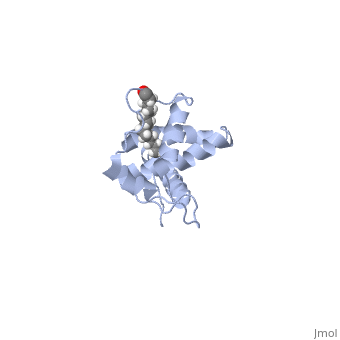User:Nathan Roy
From Proteopedia
| Line 5: | Line 5: | ||
---- | ---- | ||
| - | The HIV-1 Gag protein is the major structural protein required for virus assembly. It is synthesized as a polyprotein in the cytosol of an infected cell, and contains four functional segments; MA, CA (NTD and CTD), NC, and p6. The NC region is flanked by two "spacer" segments, denoted SP1 and SP2. The polyprotein is all alpha helical, except the NC region, which is composed of two RNA interacting zinc knuckle domains. Gag is often referred to as an "assembly machine", because expression of Gag alone is sufficient to produce budding virus-like particles (VLP's), due to multimerization of roughly 2000 Gag molecules per virion. Here, we will take a closer look at the MA | + | The HIV-1 Gag protein is the major structural protein required for virus assembly. It is synthesized as a polyprotein in the cytosol of an infected cell, and contains four functional segments; MA, CA (NTD and CTD), NC, and p6. The NC region is flanked by two "spacer" segments, denoted SP1 and SP2. The polyprotein is all alpha helical, except the NC region, which is composed of two RNA interacting zinc knuckle domains. Gag is often referred to as an "assembly machine", because expression of Gag alone is sufficient to produce budding virus-like particles (VLP's), due to multimerization of roughly 2000 Gag molecules per virion. Here, we will take a closer look at the MA, CA, and NC domains, and how the structural components of these domains aid in the assembly of virus particles. <applet load='2H3I_mono1.pdb' size='300' frame='true' align='right' caption=' FIGURE 1. MA unbound to PI(4,5)P2' scene=''/> Viral particles can be classified as immature (pre-budding and non-infectious), and mature (post-budding and infectious), and this exchange is mediated by the HIV-1 protease'''(LINK)'''. Upon viral budding, Gag is cleaved by the HIV-1 protease at multiple sites, thus possibly changing many of the structural interactions that make up the "immature" particle. For simplicity, we will only be discussing the immature formation of Gag on the plasma membrane of infected cells, as it coordinates organized viral budding. |
Revision as of 21:00, 21 April 2009
User:Nathan Roy/Sandbox 1I am a graduate student at the University of Vermont, studying the dynamics of HIV-1 cell to cell transmission and HIV-1 induced syncytia formation. Our wonderful professor, Dr. Steven Everse, has commissioned us (his students from his BioChem 351 course) to create a page describing the structure of a protein that interests us. I have chosen the HIV-1 gag protein, and more specifically, the MA and CA domains.
HIV-1 Gag
The HIV-1 Gag protein is the major structural protein required for virus assembly. It is synthesized as a polyprotein in the cytosol of an infected cell, and contains four functional segments; MA, CA (NTD and CTD), NC, and p6. The NC region is flanked by two "spacer" segments, denoted SP1 and SP2. The polyprotein is all alpha helical, except the NC region, which is composed of two RNA interacting zinc knuckle domains. Gag is often referred to as an "assembly machine", because expression of Gag alone is sufficient to produce budding virus-like particles (VLP's), due to multimerization of roughly 2000 Gag molecules per virion. Here, we will take a closer look at the MA, CA, and NC domains, and how the structural components of these domains aid in the assembly of virus particles.
|
The MA domain (also called Matrix) is essential for proper targeting of Gag (and thus virus release) to distinct locations on the plasma membrane. The MA domain is myristylated post translationally, which is important for a stable association with the plasma membrane. Perhaps just as important for proper virus assembly, is the interaction of MA with phosphatidylinositol 4,5-bisphosphate (PI(4,5)P2). It has long been known that HIV-1 budding occurs at sites rich in PI(4,5)P2 and cholesterol (lipid rafts, and tetraspanin enriched microdomains, TEMs), probably to ensure proper virus budding localized to the plasma membrane (elimination of PI(4,5)P2 causes virions to assembly at intracellular endosomes). More recently, structural analysis of MA has revealed a myristylation switch that allows exposer of the myristyl group to the plasma membrane only upon binding of MA to PI(4,5)P2, a mechanism ensuring proper localization of Gag to rafts within the plasma membrane.
|
|
|
|

